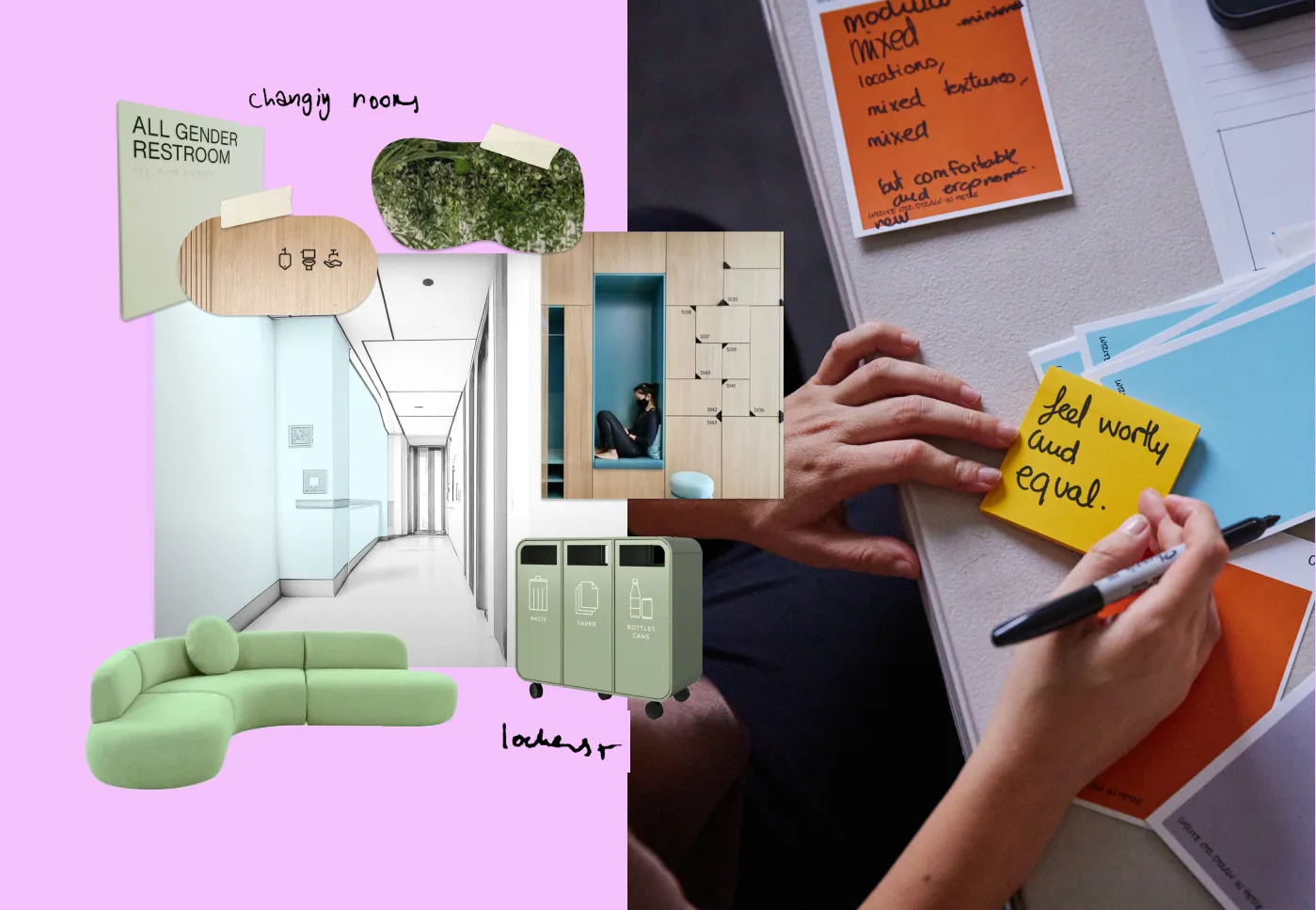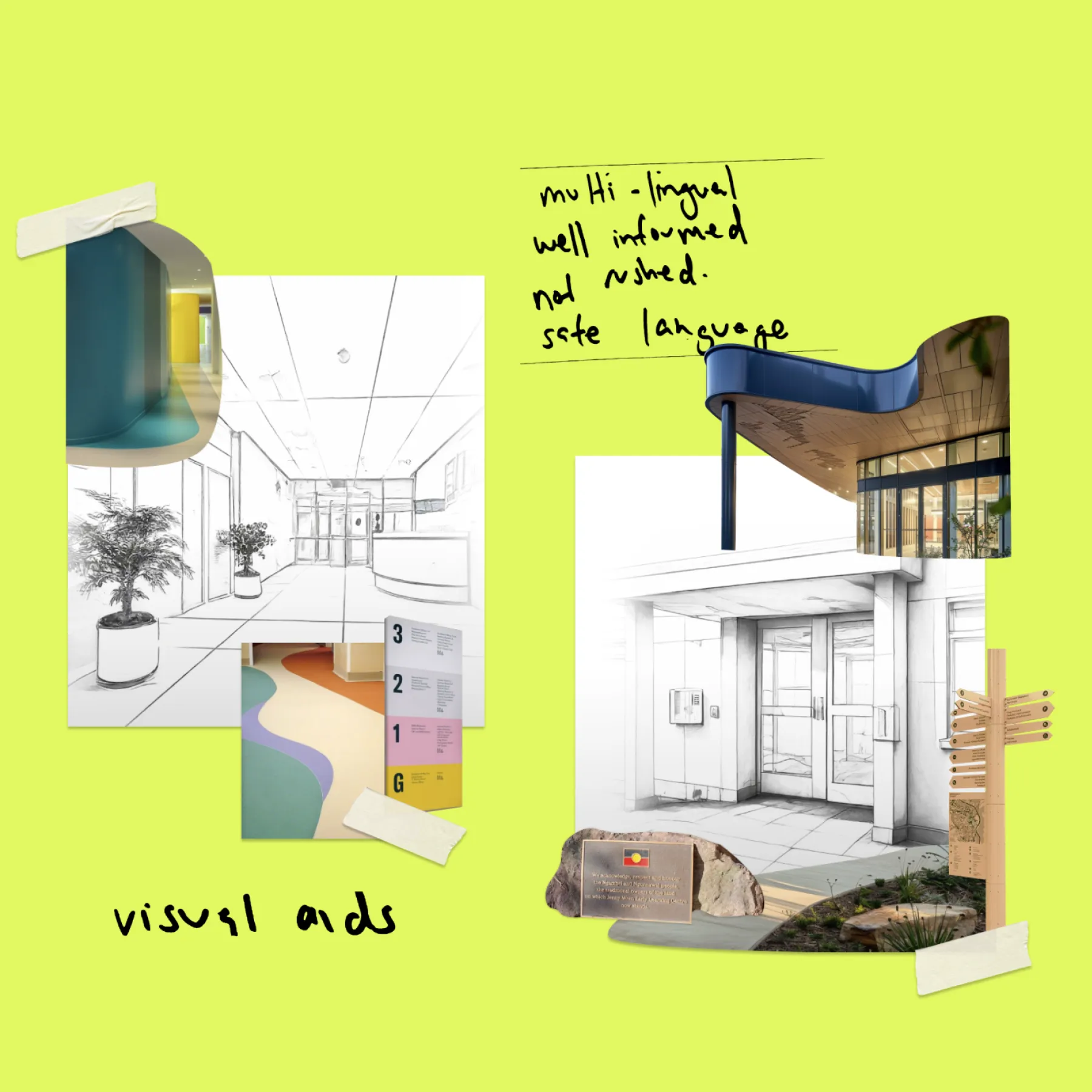Creating inclusive healthcare facilities for LGBTIQA+ communities
In partnership with NSW Health Infrastructure


Acknowledgement
We would like to acknowledge LGBTIQA+ people.
This project stands on the shoulders of generations of LGBTIQA+ advocacy from within the community and their allies.
LGBTIQA+ is used in reference to lesbian, gay, bisexual, transgender and gender diverse, intersex, queer, and the + represents people of other diverse sexualities and genders not captured in the letters of the acronym.
We acknowledge that communities may use other terms to describe themselves and that language is always changing, nuanced and personal to an individuals identity.

Yesterday
In partnership with NSW Health Infrastructure, we engaged LGBTIQA+ community members to redesign how NSW Healthcare Facility built environments can foster inclusivity for their communities.
LGBTIQA+ inclusive design is an emerging space, specifically the interrelationship between service and built environment design. Whilst efforts have been made to improve the service experience, there has been limited community consultation on how the built environment can aid and create LGBTIQA+ inclusive spaces.
Interactions with public healthcare facilities are especially fraught experiences for the LGBTIQA+ community. Perceptions of inflexible and dehumanising built environments in settings that failed to affirm their chosen sexuality and gender identity exacerbated mental and physical health challenges when seeking healthcare, often in an emergency or crisis scenario.
“Sometimes [...] I do have a sense of losing who I am in those spaces where my name's not in command anymore, my identities, whatever they decide it needs to be.” —Participant
While the challenges for creating inclusion within the built environment are monumental, by offering diverse options for interacting with physical spaces and adapting to individual needs, we can create environments that genuinely empower and affirm personhood.

Today
After a comprehensive literature review, we engaged nine deeply diverse and intersectional LGBTIQA+ community members. These people identified as transgender and gender diverse and people with disabilities, with significant lived and living experience of NSW Public Hospitals, some in a crisis or emergency context from short to long stays at hospital. These people represent an intersection of communities most impacted by a lack of LGBTIQA+ inclusive healthcare facilities.
Participant safety was key, and our workshops were led by a transgender design practitioner. We build a scaffolding and narrative to help participants connect with the feeling of inclusion, and the role that place plays within that. We used trauma-informed and strength-based design activities, for example, thinking about ideas rather than retelling previous experiences, to minimise the risk of psychological harm.
Together we:
Reflected on LGBTIQA+ spaces to define key built environment components that created inclusion
Developed ideas to create inclusive hospitals through the built environment using objects as stimuli to inspire new thinking
Designed hospital spaces as templates that detailed desired qualities and physical components of the space
The final vision was that LGBTIQA+ inclusive healthcare facilities are spaces that respect who you are, and respond with you to restore balance.
Spaces will achieve this vision by honouring autonomy, embracing fluidity and providing consistency.
“I love the idea of like a sovereign space. Have you spent a lot of time in hospitals? You kind of lose that. You lose that autonomy, and the sense of it. And to have any little inch of that back, is so nice.” —Participant

Tomorrow
By creating inclusive healthcare facilities for LGBTIQ+ communities, we create inclusive health for all. The vision and principles created in this project will have far reaching impacts not only for LGBTQIA+ communities but the experience of the healthcare system for everyone.
NSW Health Infrastructure now have community designed concepts for the built environment that capture the ideal future experience, while acknowledging the current experience, inclusive design requirements and lived experience of the LGBTQIA+ community.
Our research will form the LGBTIQA+ inclusive design guidelines for hundreds of public healthcare facility retrofits and new builds across NSW, transforming the experience for LGBTIQA+ people accessing public healthcare.



Get in touch
Want to know more about thoughtful and safe co-design with community? Chat to Dewani today.
Dewani Shebubakar
Head of Practice
Next Case Study
University of Western Australia:
Mental health education tool designed for and by young Australians
